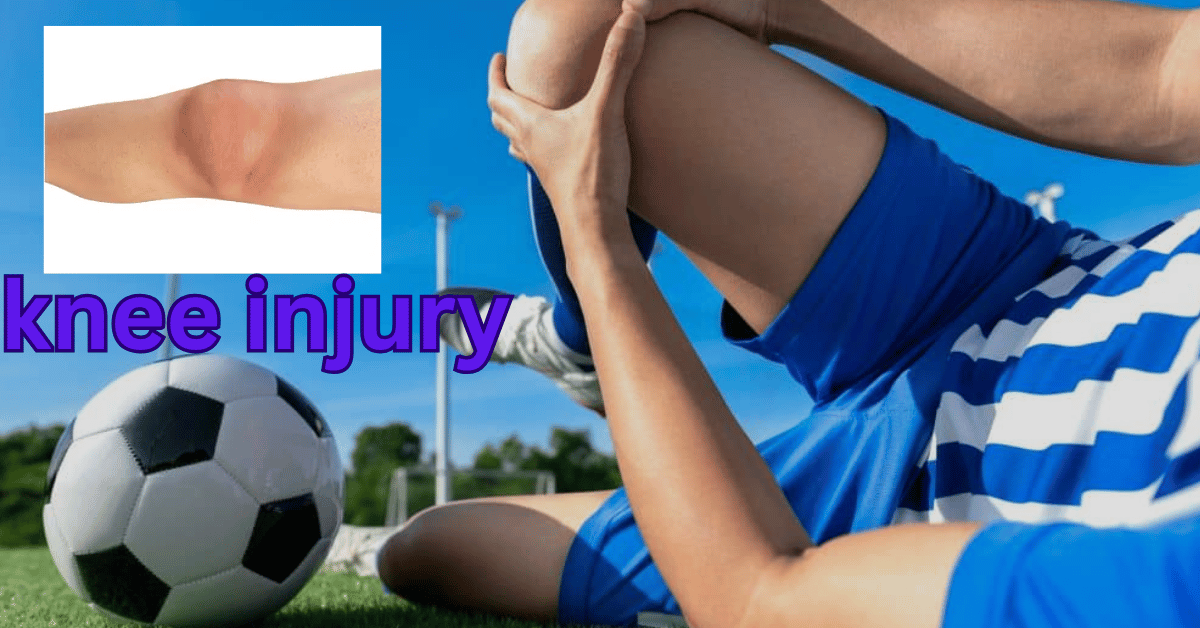Knee injuries are frequent in soccer due to the sport’s fast-paced and active style which includes running, jumping, and quick sprints. These movements often place significant strain on the knee joints. I write 5 Reasons Soccer Players Knee Injuries
Check out 5 Reasons Soccer Players Knee Injuries:
- Quick shifts in movement: Sudden stops starts, twists, or turns can put pressure on the knee joints.
- Physical impact: Injuries can occur if the knee is hit by another player or during contact with the ball.
- Defensive moves: Trying to block an opponent while tackling can strain the knee.
- Meniscus damage: The meniscus, a cushion-like disc in the knee, can tear if it’s under too much pressure.
- Overuse injuries: Playing excessively or not taking enough breaks can lead to knee strain.
Some Tips to Avoid Knee Injury
- Warm up properly before games or practice
- Wear well-fitted, supportive soccer cleats
- Use protective equipment such as shin guards and knee pads
- Drink enough water to stay hydrated
- Avoid playing in extreme heat or high humidity
- Focus on training to improve strength, endurance, and balance
Why Do Knee Injuries Happen in Soccer?
Soccer requires a lot of running, jumping, and quick changes in direction. These movements can strain the knee joint especially if the player lands awkwardly or twists their leg. Over time, this can lead to injuries. Sometimes, a single wrong move can cause immediate damage.
Common Knee Injuries in Soccer

Here are some of the most common knee injuries soccer players face:
- Anterior Cruciate Ligament (ACL) Injury
- What Happens? The ACL, or Anterior Cruciate Ligament, is a strong band of tissue that plays a key role in keeping the knee stable and balanced during movement.
- Symptoms: Pain, swelling, and difficulty moving the knee.
- Cruciate Ligament Injury
-
- What Happens? This injury often occurs when the knee is twisted or overstretched. Players might hear a “pop” sound when it happens.
- Symptoms: Swelling, pain, and trouble bending or straightening the knee.
-
- Meniscus Injuries
-
- What Happens? The meniscus is a wedge-shaped cartilage that sits between the thigh bone (femur) and the shin bone (tibia), acting like a natural shock absorber for the knee joint.
- Symptoms: Pain, swelling, and a feeling that the knee is “locked” in place.
-
How to Prevent Knee Injuries
Although injuries are a common part of soccer, there are several steps you can take to lower the chances of getting hurt.
- Warm-Up Properly: Always stretch and warm up before playing. This helps prepare the muscles and joints for action.
- Strengthen Your Muscles: Strong leg muscles can support the knee and reduce stress on the joint.
- Use Proper Techniques: Learn the right way to kick, pivot, and land to avoid unnecessary strain.
- Wear the Right Gear: Good soccer shoes and knee supports can help protect your knees.
What to Do If You Get Hurt
If you feel pain or notice swelling in your knee, stop playing immediately. Rest, ice the area, and keep your knee elevated. If the pain doesn’t go away, see a doctor. Early treatment can help you recover faster and get back to playing soccer.
How long does a knee injury heal?

The healing time for a knee injury depends on its severity. Minor injuries, like sprains, may take 1 to 3 weeks to heal. More serious injuries, such as ligament tears, can take several months with rest and rehabilitation. Always consult a doctor for the best recovery plan.
Can a knee injury cause death?
Typically a knee injury itself does not directly cause death. However, in very severe cases, if the injury leads to significant damage to vital blood vessels, organs, or causes life-threatening complications like severe bleeding or infections, it could become more dangerous. It’s important to seek medical attention promptly for any serious injury to avoid complications.
5 tips to avoid knee injury
- Warm Up Properly
Before any physical activity, take the time to warm up your muscles and joints. Gentle stretching or light cardio, like walking or jogging, can help prepare your knees for more intense movement and reduce the risk of injury. - Maintain Proper Form
Whether you’re running, lifting weights, or doing any physical activity, always focus on using correct posture and technique. Poor form can put extra strain on your knees and lead to injuries over time. - Strengthen Leg Muscles
Building strength in your quadriceps, hamstrings, and calf muscles can support your knees and improve stability. Incorporate exercises like squats, lunges, and leg presses to help protect your joints. - Wear Proper Footwear
Choose shoes that provide proper arch support and cushioning. Ill-fitting shoes or worn-out soles can affect your knee alignment and increase the risk of strain or injury. - Listen to Your Body
If you feel any discomfort or pain in your knees, don’t push through it. Rest, ice, and elevate your knees to reduce swelling. Ignoring early signs of discomfort can lead to more severe injuries later on.
Conclusion
knee injuries are a common concern for soccer players due to the high-impact and fast-paced nature of the sport. The five main reasons include frequent twisting and turning, sudden direction changes, overuse, poor conditioning, and inadequate footwear. By focusing on proper training, strengthening the leg muscles, and wearing appropriate gear, players can significantly reduce the risk of knee injuries. Staying mindful of these factors can help ensure better performance and longevity in the game.

